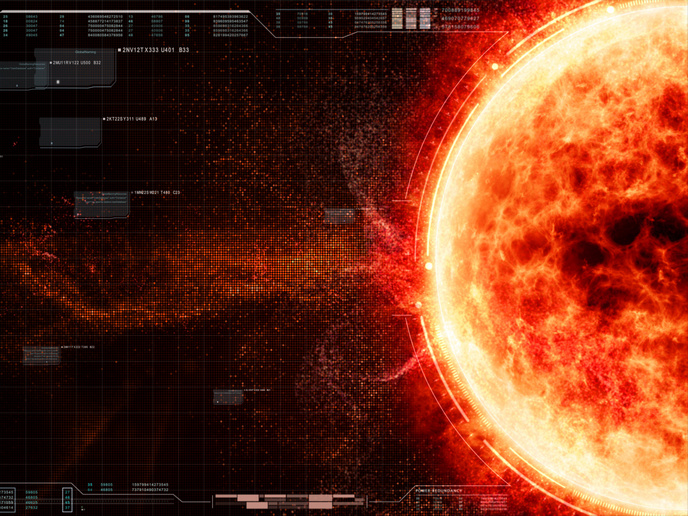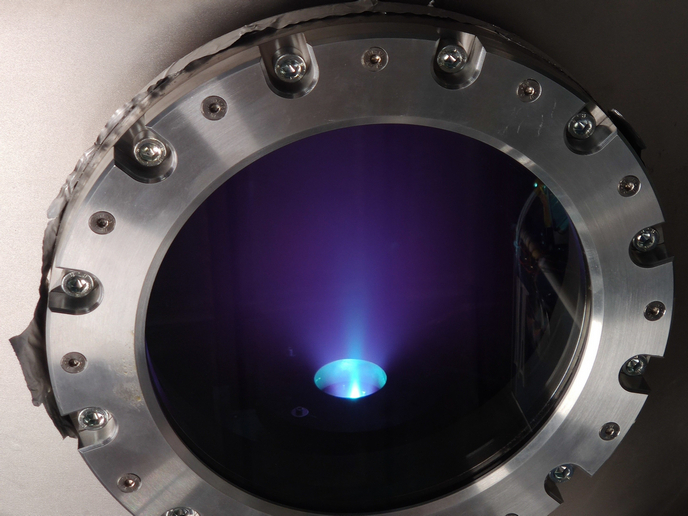Shining a light on solar energetic particle events
As spacecraft leave Earth’s protective magnetic field, they find themselves increasingly exposed to radiation. Solar energetic particles (SEPs) – charged particles that are ejected at nearly the speed of light from the Sun during solar eruptions – present a particular hazard. During large eruptions for example, particle intensities in interplanetary space can be several orders of magnitude higher than background radiation caused by cosmic rays originating outside the solar system. “Once an SEP event hits a spacecraft, it can have a number of negative impacts,” explains SERPENTINE project coordinator Rami Vainio from the University of Turku in Finland. “High levels of radiation absorbed by on-board electronics can cause component failure. Even a single energetic charged particle can cause a component to malfunction, which can lead to the loss of spacecraft.”
Widespread energetic particle events
The EU-funded SERPENTINE project sought to identify the root causes of so-called widespread energetic particle events. “These phenomena are not yet fully understood,” remarks Vainio. “We also wanted to better understand the mechanisms behind particle acceleration.” To do this, the project team analysed a large number of SEP events observed by multiple spacecraft in the inner solar system. Data was gathered from ESA’s Solar Orbiter and BepiColombo, NASA’s Parker Solar Probe and STEREO-A, as well as several near-Earth spacecraft. “From this, we were able to determine many of the main characteristics of each SEP event,” adds Vainio. “We then analysed some events in more detail, using numerical simulations of particle acceleration in interplanetary space.”
Interplanetary shock waves and coronal mass ejections
The project team identified multiple reasons for widespread SEP events, supported by data. “We found that broad sources, like interplanetary shock waves driven by coronal mass ejections (CMEs), are typically involved,” says Vainio. “However, not all observations can be explained by this broad source.” The project was also able to provide convincing evidence that both ions and electrons are accelerated in CME-driven shocks, which for electrons has been a subject of long-standing debate. “We did not only have scientific objectives in SERPENTINE,” notes Vainio. “We also released a large number of data analysis tools, catalogues and data sets that were developed during the project. Our goal was that the whole community can make use of the project’s outcomes.”
Analytical tools for early-phase solar eruptions
Two EU-funded projects – SOLER and SPEARHEAD – have been launched to further build on SERPENTINE’s findings. “SOLER will further develop analysis tools for early-phase solar eruptions,” says Vainio. “This is when we believe that particle acceleration to the highest energies occurs. SPEARHEAD will concentrate on how SEPs and cosmic rays are modulated by solar eruptions. The hope is that these follow-up projects will provide deeper insights into issues such as particle acceleration processes close to the Sun.” By the end of the present solar activity cycle, Vainio expects that a solid understanding of how SEP events originate – and how they spread across the solar system – will have been achieved. “Ultimately, safer space operations through mitigating the effects of solar radiation storms can only be achieved through gaining insights into SEPs,” he adds. “This will enable the development of models that are good enough to predict their evolution. This is the long-term goal of our quest to understand SEP events.”
Keywords
SERPENTINE, solar, space, radiation, spacecraft, Sun, interplanetary, cosmic







